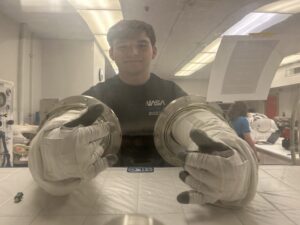 Final Goals of your project/s:
Final Goals of your project/s:
– Create a force-sensing controller for the Joint AR prototype.
– Document development and testing of the force sensing in a controls trade study to give to xEVA vendors (axiom, collins).
– Perform testing in the B7 glovebox to determine usability in a pressurized environment.
Describe what you did during the internship:
I created the Joint AR force sensing controls are in development for use in the Joint AR system as a way of UI manipulation. The force-sensing controls use force-sensitive resistors that measure the force a user outputs as a voltage through the resistor. This setup allows for variable force control that can be used completely internal to the suit and is versatile to the point where it can be used freehand or on various places around the suit, such as the opposite forearm or the same side thigh.
The force sensing controls utilized 3 force sensing resistors with 3D printed “pucks” on top of them. These pucks make it, so pressure doesn’t just deform the sensor into the finger of the subject. They also help to provide more accurate data on the force outputs.
Input commands for the short press and the short hold are relatively fast commands. In terms of versatility, the controller can be activated at any point and can be operated with only one hand. This means you have one hand to carry tools or tethers, while the other is used to cycle through procedures, while the physical hand controller requires both arms to be in use. Lastly, the ease of use. As stated earlier this control method can be activated anywhere using discrete finger movements. The control method is also flexible and offers multiple different methods of control. As of now short presses and long presses are the main 2 methods of control, however, something such as scrolling could be added if necessary.
The uncertainty of command activation stems from the lack of haptic feedback in the system. This leaves the user feeling unsure of whether the commands are actually reading or not. This has a simple solution of either integrating the piezo board, or a small vibration motor. This small fix would give the user much more confidence while using the system.
Sensor placement is the second notable problem for the controller. On this fabric, the sensors tend to shift around on the glove since they aren’t fixed by anything but hot glue or electric tape. This leads to the user having sensors slide down to the middle of the finger, which is much more uncomfortable. Two solutions exist that we have thought of so far. The first would be adding holes in the puck on the outer shell, meaning that we could sew the puck into the glove and have the sensors adhered to the surface of the puck. The other would be using something similar to EKG sensor adhesion strips, that way the sensors are adhered directly to the skin and fixed before getting into the suit.
Lastly, the activation sequence speed is another, fixable problem. Ideas for fixing the activation/deactivation speed would be decreasing the number of commands to input to activate the system. This could be done through repeated HITL testing, attempting to find a unique set of 2-3 commands while still minimizing false activations. Other ideas would be RFID/NFC activation or lighthouse activation on different body parts.
Moving forward with the force sensing controls, the next logical step would be integrating haptic feedback into a higher fidelity prototype. After that, likely full stack testing, ARGOS testing, and potentially NBL testing would help validate the system and show us more of the problems that won’t be seen unless that testing is done.
Did you achieve your goals? What were the results?
All goals were achieved. The result was an alternative control system that could be used to control the prototype. The team also learned a lot about potential variables that could affect other control methods, and we gathered good testing data and testing procedures that can be used for every test to form a comparative set of data.
Describe positive lessons learned:
– Minimize design variables to test other design variables
– Prototype quickly and learn as much as you can from each iteration
– Success isn’t cut and dry, sometimes success criteria can change.
Describe negative lessons learned:
– Remote work can be a bit tough, you have to find the right hours.
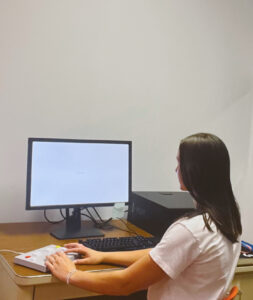 My current academic research project is based in psychology, specifically focusing on motivation and attention. Throughout my behavioral study, I will focus on how motivation can have an impact on someone’s attentional breadth, or the amount that someone is attuned to global vs specific features of an object or situation. By doing this, I hope to clear up disparities in existing work on the effect of motivation on attentional breadth and produce a literature review of the current experiments that pertain to the subject. Motivation is key to understand in the discipline of psychology, for it affects how willing people are to put their time, effort, and resources into certain projects or ideas. Additionally, if motivation plays a role in attentional breadth, this could inform how people’s understanding of certain ideas can be manipulated by their level of motivation at a given time.
My current academic research project is based in psychology, specifically focusing on motivation and attention. Throughout my behavioral study, I will focus on how motivation can have an impact on someone’s attentional breadth, or the amount that someone is attuned to global vs specific features of an object or situation. By doing this, I hope to clear up disparities in existing work on the effect of motivation on attentional breadth and produce a literature review of the current experiments that pertain to the subject. Motivation is key to understand in the discipline of psychology, for it affects how willing people are to put their time, effort, and resources into certain projects or ideas. Additionally, if motivation plays a role in attentional breadth, this could inform how people’s understanding of certain ideas can be manipulated by their level of motivation at a given time.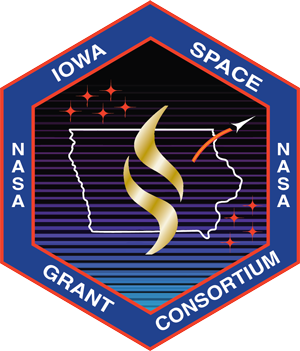


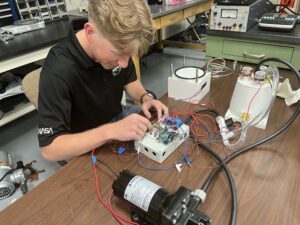
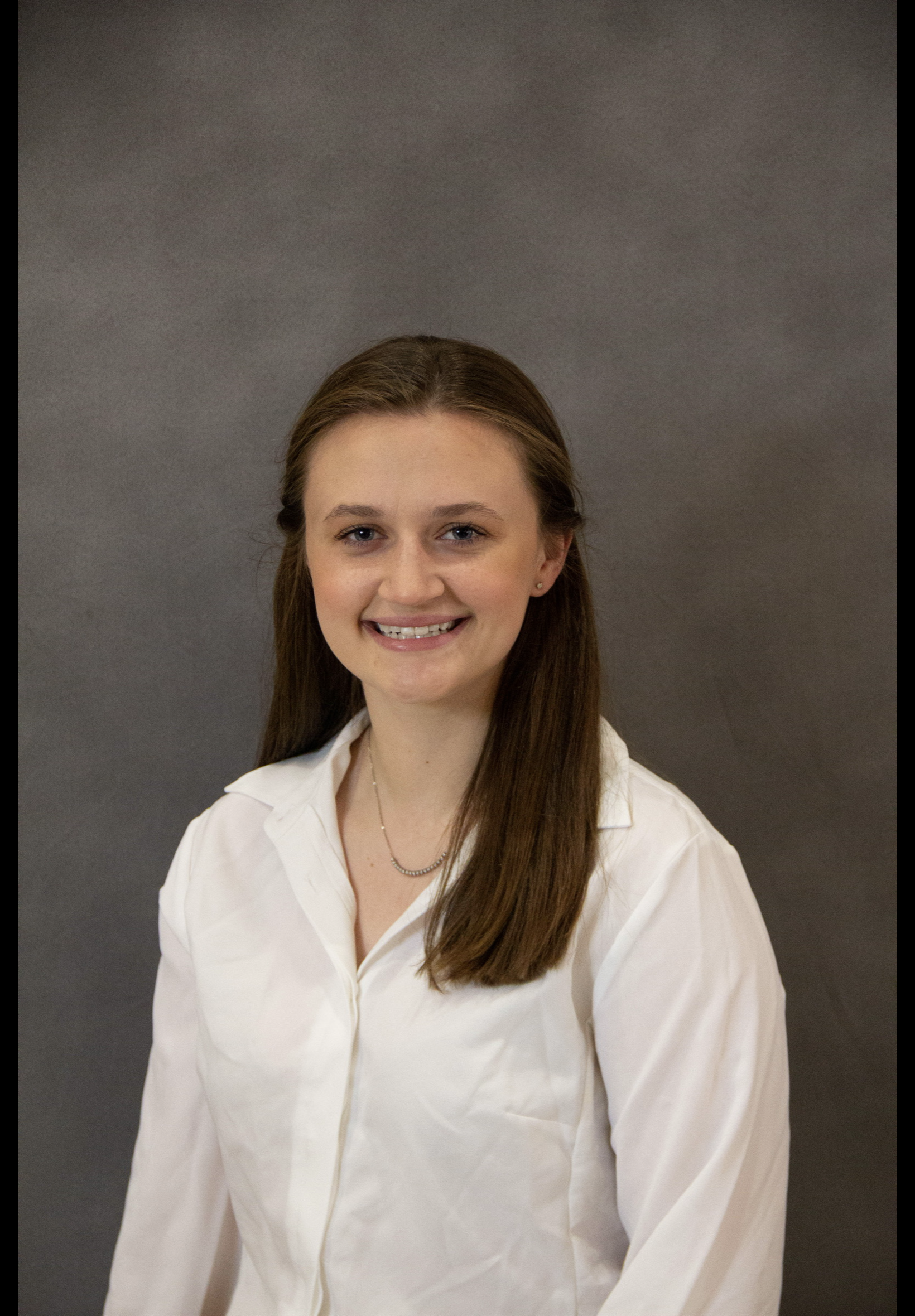
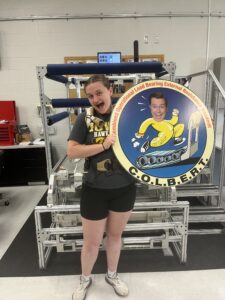
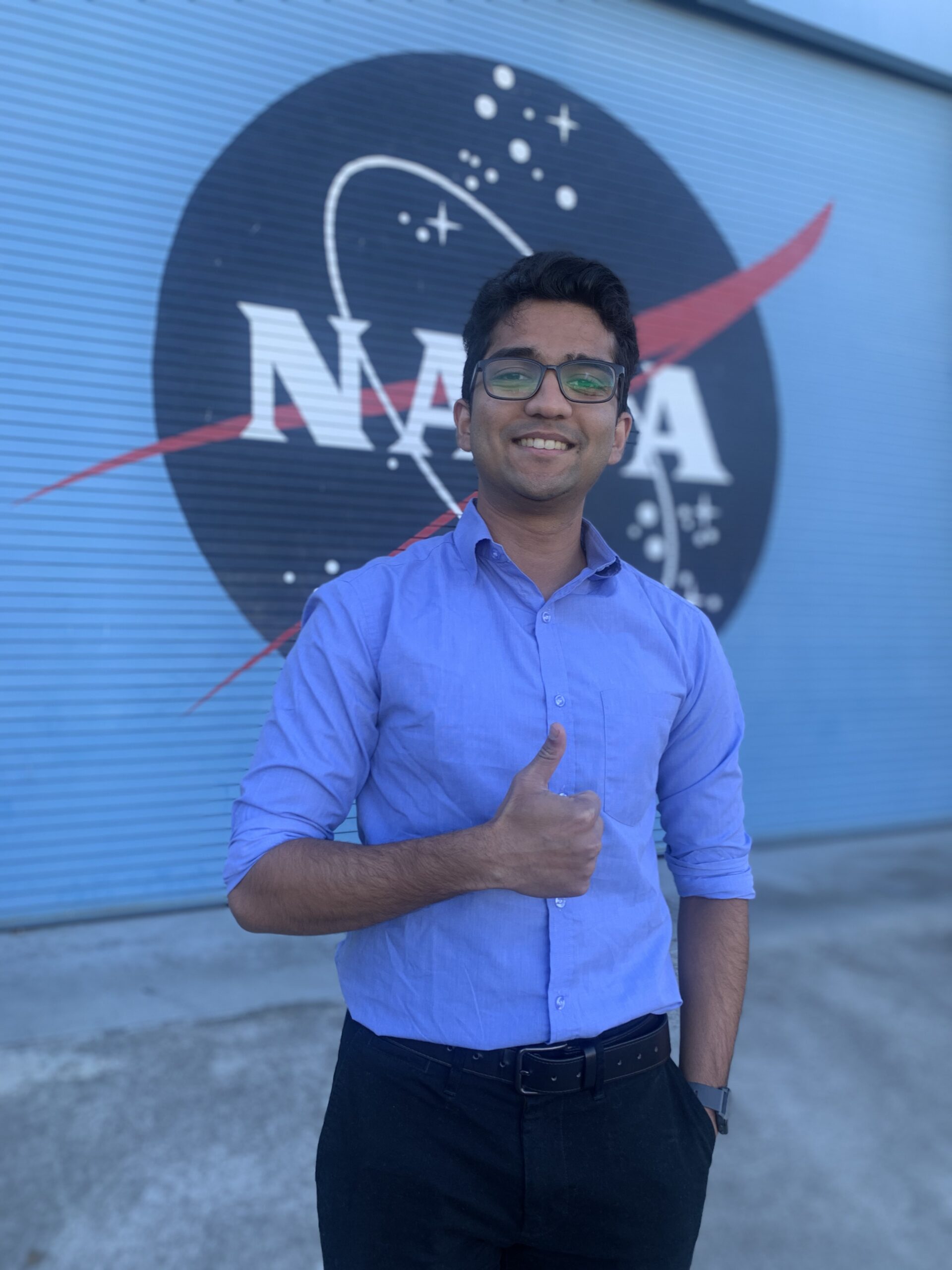
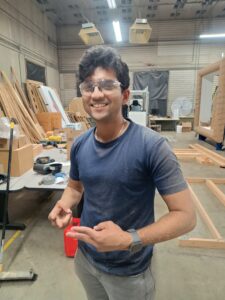 Describe what you did during your internship:
Describe what you did during your internship: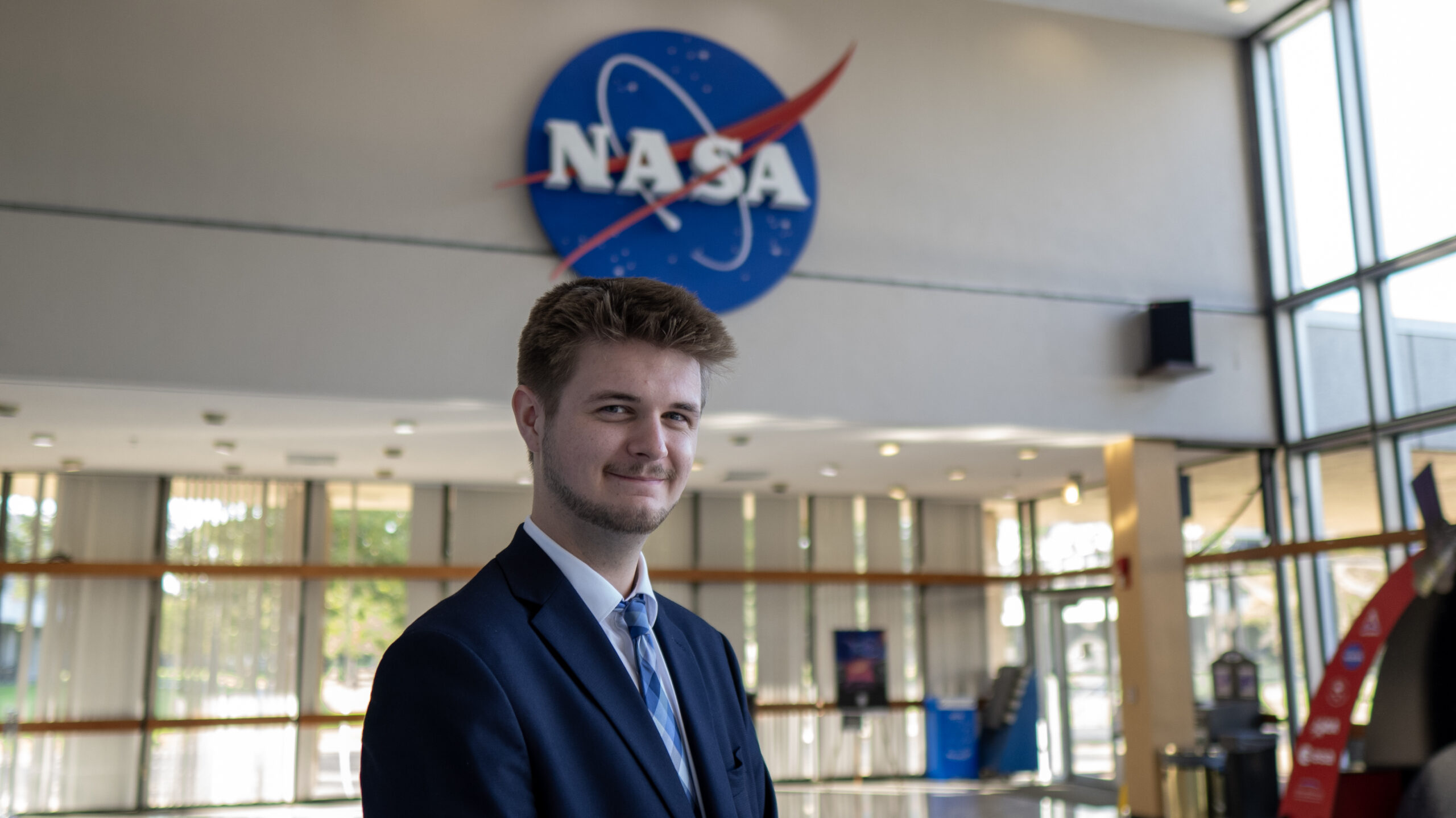
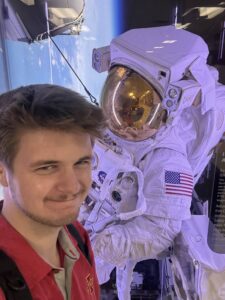


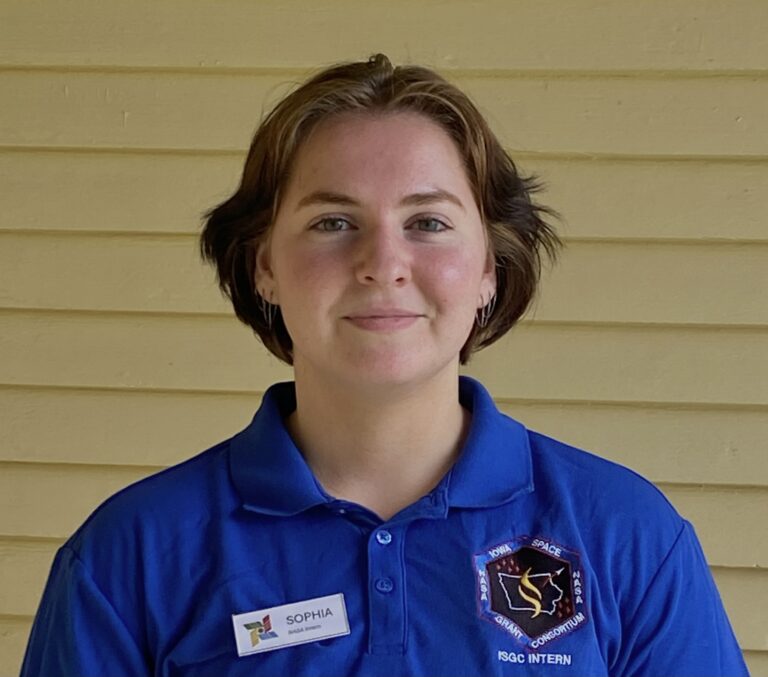
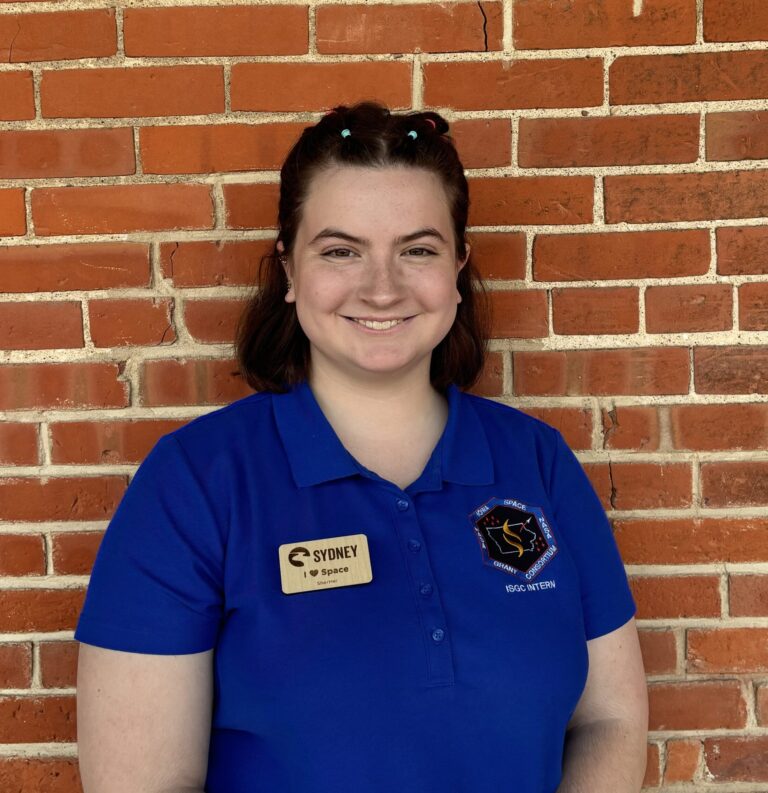
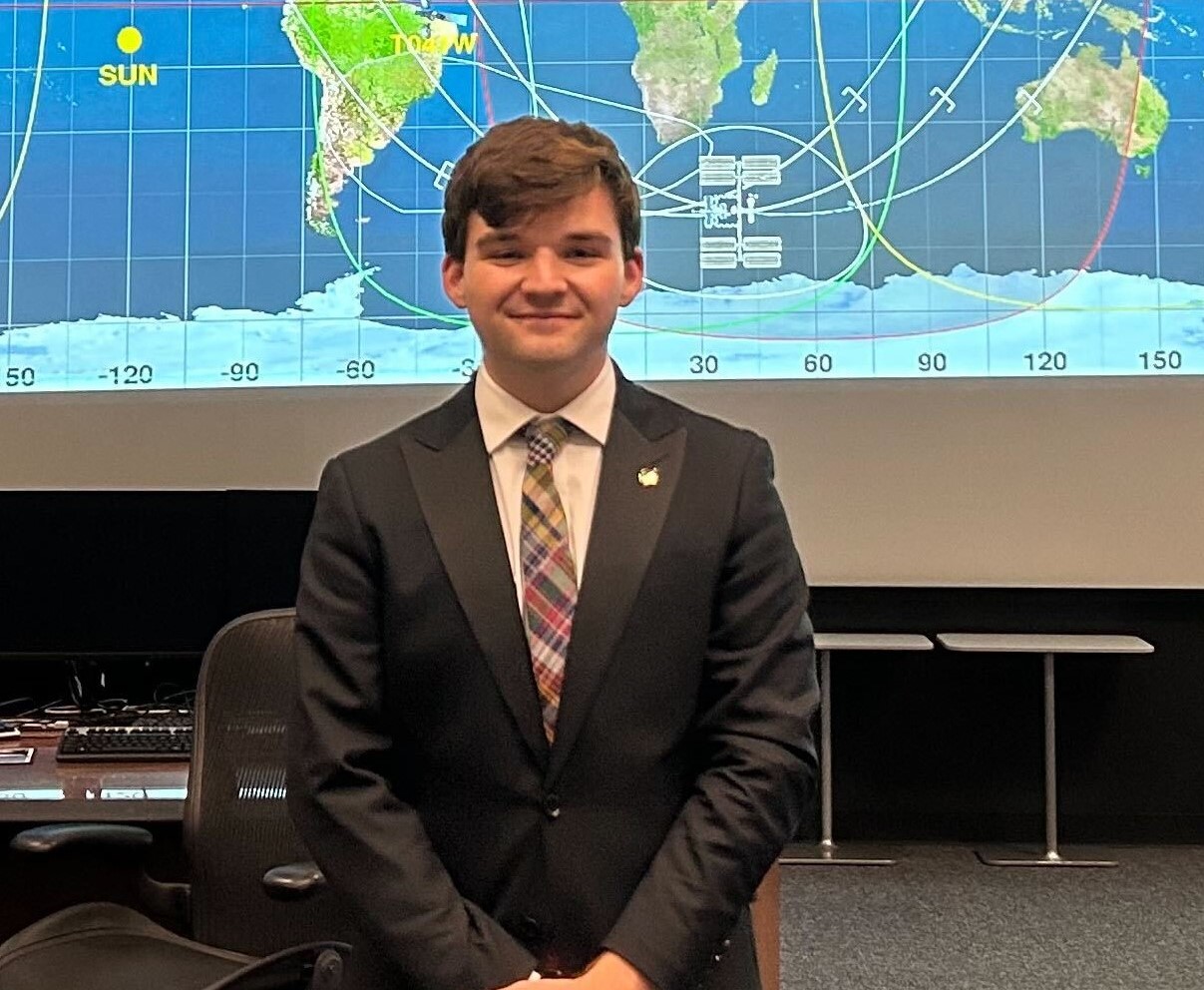
 Final Goals of your project/s:
Final Goals of your project/s: